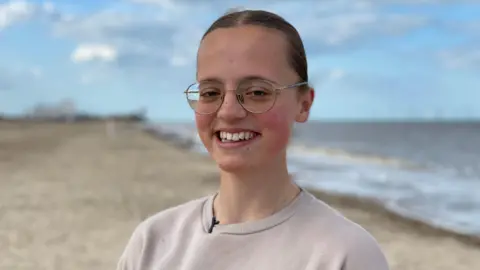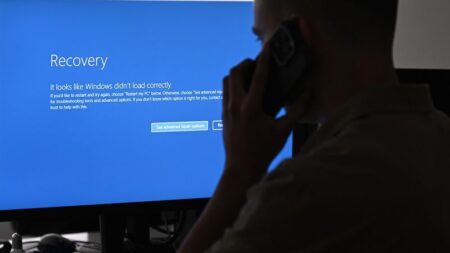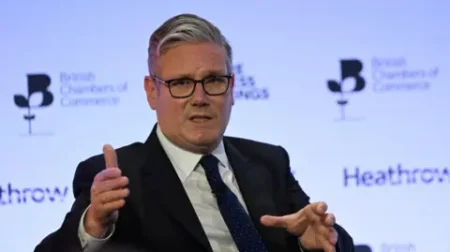### Breakthrough Drug Offers New Hope for Rare Disease Sufferers
Mary Catchpole, a 19-year-old from Norfolk, has become the first patient in Europe to receive a newly licensed treatment, bringing renewed hope in her battle against a rare, inherited immune disorder. The condition has drastically impacted her life, limiting her ability to fight off infections and leading to the tragic loss of several family members, including her mother and grandmother. This new treatment, a drug called leniolisib, holds promise not only for Mary but for others afflicted by the same condition, known as Activated PI3-kinase Delta Syndrome (APDS).
The announcement of the successful treatment has led to a wave of emotional responses from Mary and her father, Jimmy. Mary expressed her joy, stating, “This treatment has brought me hope and joy. I feel like I can do anything.” However, she also remembers the bittersweet nature of her situation, lamenting the loss of family members who did not have the opportunity to benefit from such medical advancements.
The drug leniolisib is the first specific treatment developed for APDS, a condition that was identified as recently as 2013 through research conducted by the University of Cambridge and Addenbrooke’s Hospital. The research uncovered a faulty gene that affects several members of Mary’s family. Dr. Anita Chandra, who serves as a consultant immunologist at Addenbrooke’s, reflected on how remarkable it is to see such a rapid transition from the discovery of a new disease to the availability of an effective treatment within just 12 years.
Mary’s family has not only been affected by APDS but has also played a significant role in its research. Her father, Jimmy, noted, “We just wanted to help, not just for our own sakes, but we heard there were other rare cases.” This commitment to advancing medical knowledge is evident; Mary’s mother, Sarah, volunteered for clinical trials, and Mary has followed suit as she grew older. Tragically, Sarah passed away at 43 after battling this disease, but her legacy continues through her daughter’s newfound hope.
APDS disrupts the normal function of the immune system, leaving individuals susceptible to recurrent infections, swelling of organs and lymph nodes, and, alarmingly, an increased risk of cancers such as lymphoma. The introduction of leniolisib, branded as Joenja, represents a significant step forward, as it acts by blocking the errant enzyme that causes these disruptions. Patients, like Mary, are required to take this medication twice daily in tablet form, and its potential effects are already being felt; Mary’s reliance on additional medications has begun to decrease.
Mary remarked on the transformative nature of this treatment, expressing a desire to engage in life more fully: “I want to go on more adventures and take risks because all I’ve ever known is medication, needles, and hospital appointments.” This newfound optimism reflects a shift in her outlook on life, as she contemplates a future not overshadowed by illness.
Professor Sergey Nejentsev, who originally led the research identifying APDS, emphasized the importance of leniolisib in offering tailored solutions for such an incredibly specific genetic disorder. “As soon as we understood the cause of APDS, we realized that certain drugs could be used to inhibit the enzyme that is activated in these patients,” he noted.
NHS England has recognized the drug’s value, approving it despite a list cost of £352,000 per year, following negotiations for a substantial discount that rendered it cost-effective for the health service. With an estimated potential to assist up to 50 patients aged over 12 in England, the implementation of leniolisib marks a significant milestone in the treatment of rare genetic disorders.
In conclusion, Mary Catchpole’s story is one of sorrow transformed into hope, not just for herself but for her family and many others facing the same daunting disease. The medical advancements represented by leniolisib have the potential to change lives, proving that with ongoing research and clinical trials, there remains a beacon of hope for patients suffering from rare and life-altering conditions.











